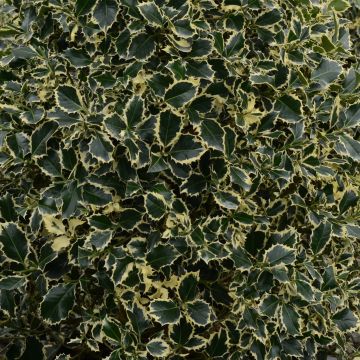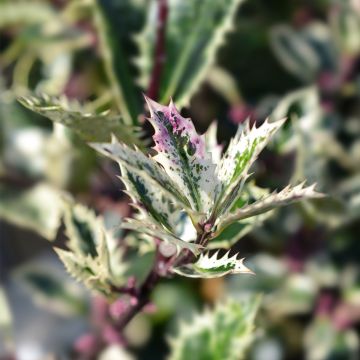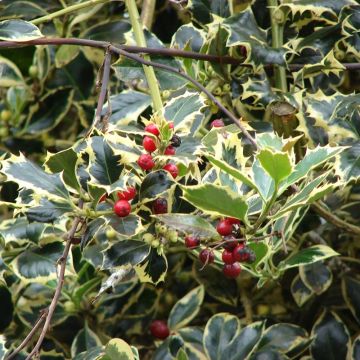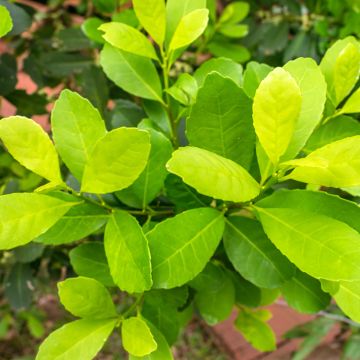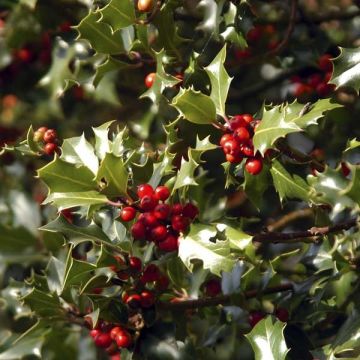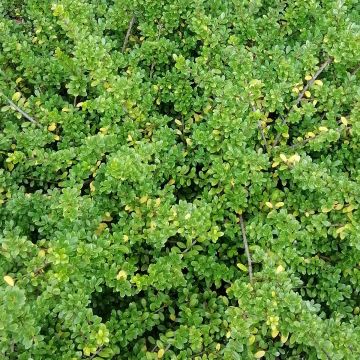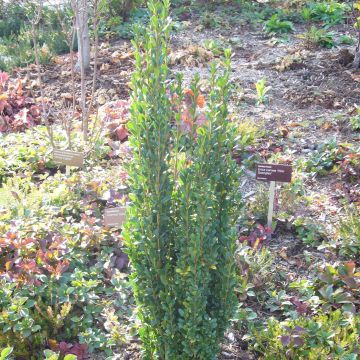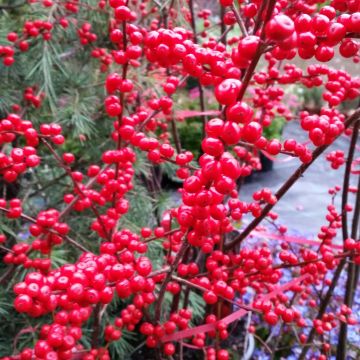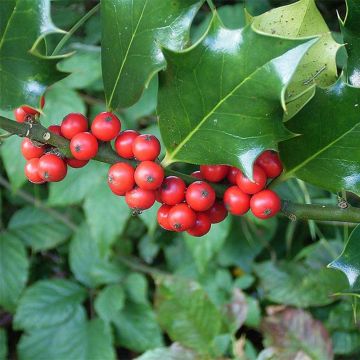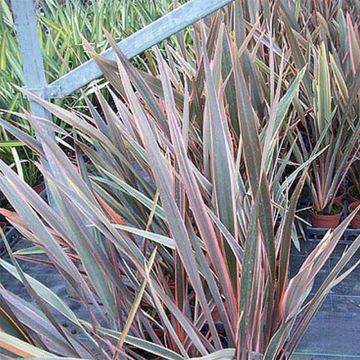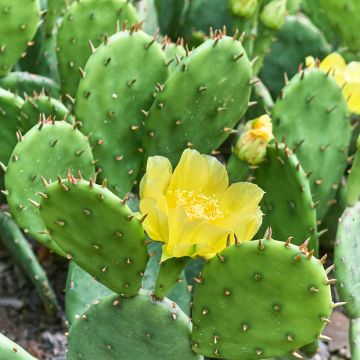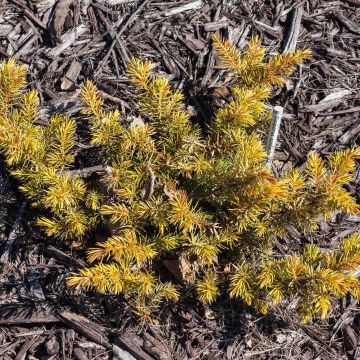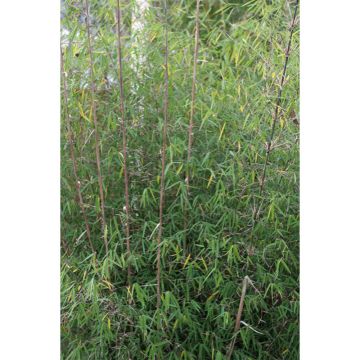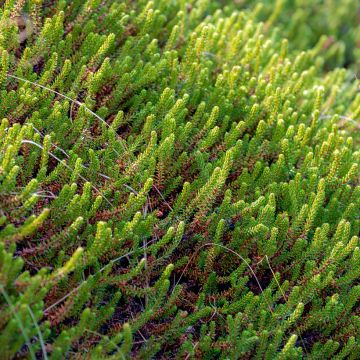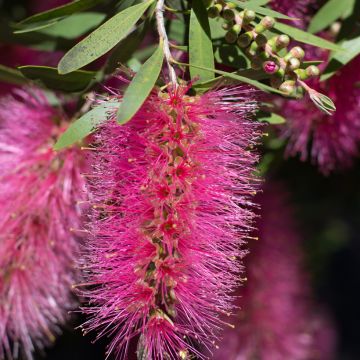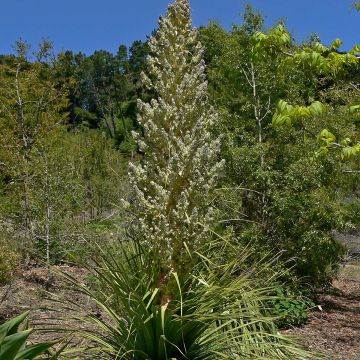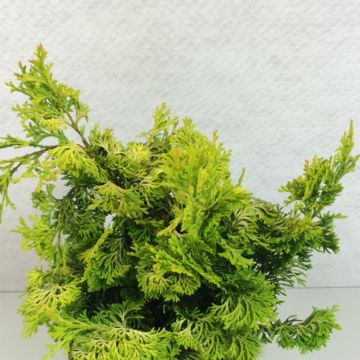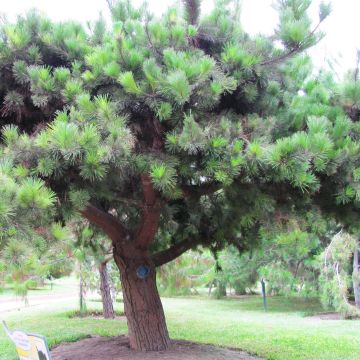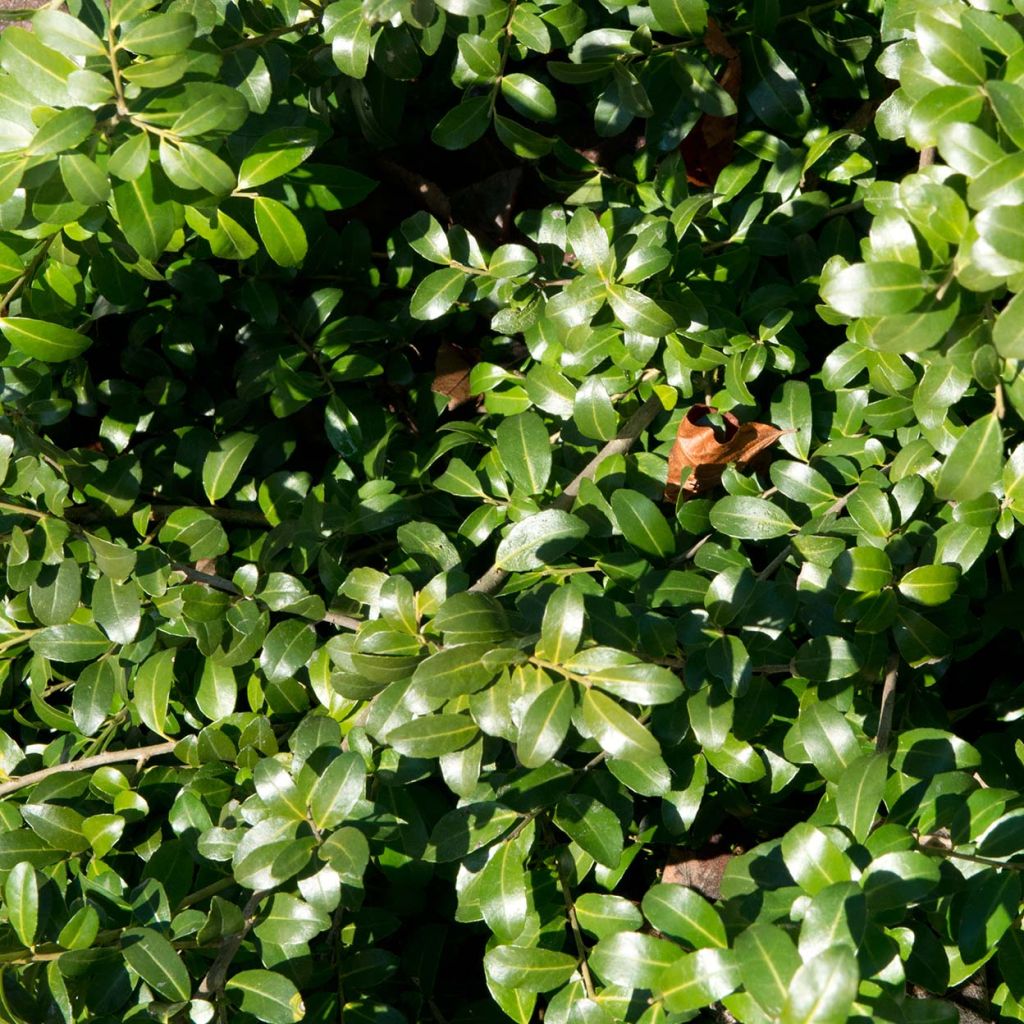

Ilex crenata Green Hedge - Japanese Holly
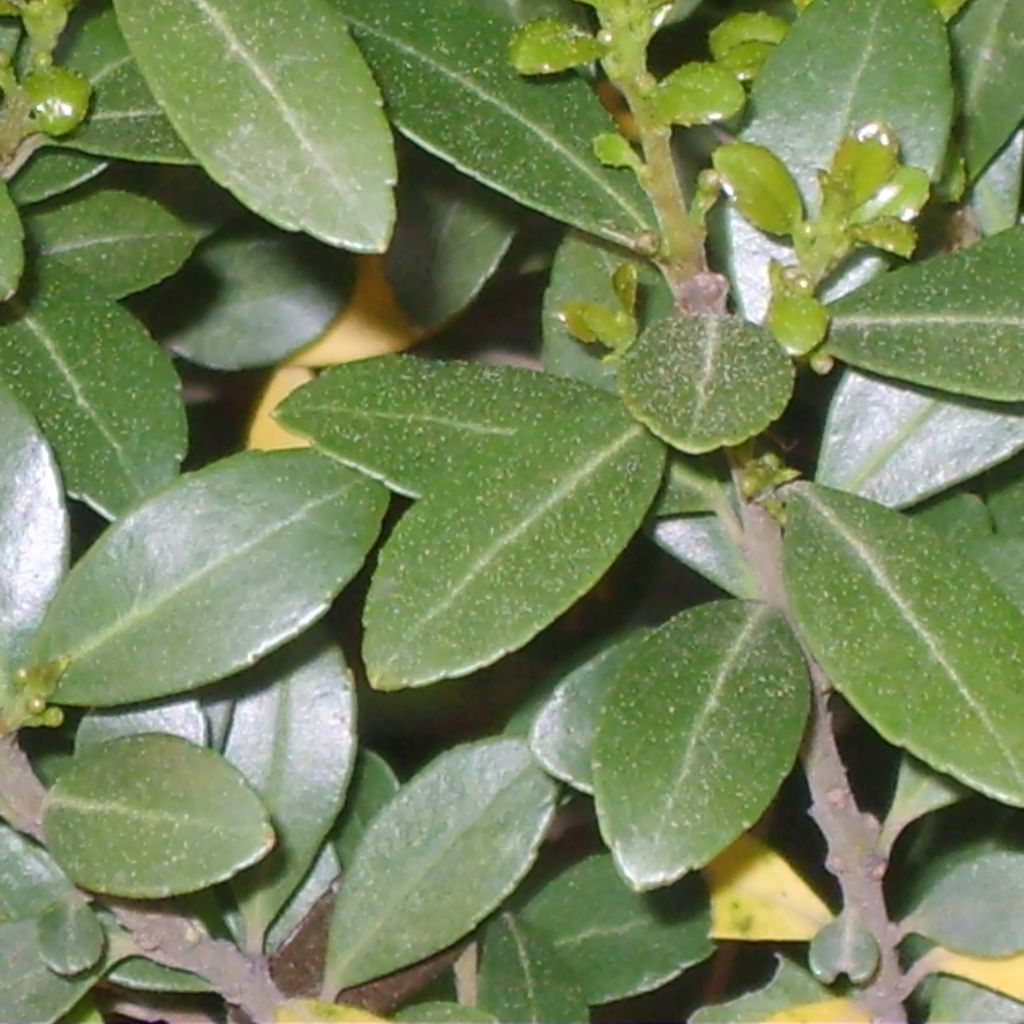

Ilex crenata Green Hedge - Japanese Holly
Ilex crenata Green Hedge - Japanese Holly
Ilex crenata Green Hedge
Japanese Holly, Box-leaved Holly, Box-leaved Ilex, Dwarf Holly
This item cannot be shipped to the selected country
Delivery charge from €5.90
Delivery charge from €5.90
Delivery charge from €5.90
Delivery to Corse prohibited
More information
Schedule delivery date,
and select date in basket
This plant carries a 24 months recovery warranty
More information
We guarantee the quality of our plants for a full growing cycle, and will replace at our expense any plant that fails to recover under normal climatic and planting conditions.
From €5.90 for pickup delivery and €6.90 for home delivery
Express home delivery from €8.90.
From €5.90 for pickup delivery and €6.90 for home delivery
Express home delivery from €8.90.
From €5.90 for pickup delivery and €6.90 for home delivery
Express home delivery from €8.90.
Delivery to Corse prohibited: UE law prohibits the import of this plant from mainland France to Corse as part of the fight against Xylella fastidiosa. Please accept our sincere apologies.
More information

Does this plant fit my garden?
Set up your Plantfit profile →
Description
The Ilex crenata Green Hedge is a new variety of crenate holly that is easy to grow in soil that is not too chalky and is flexible. This evergreen shrub with small non-prickly leaves and a dense and compact habit is ideal for creating low hedges or hedges at eye level and has the advantage of growing faster than boxwood. It tolerates pruning very well, no matter how severe, and is wonderfully suited for topiary. The female plants produce beautiful black berries from September to March. Plant it in a sheltered spot away from the blazing sun, in soil that remains slightly moist but well-drained. Often used in Japanese gardens it allows you to try your hand at topiary!
Crenate holly is a shrub native to Japan, belonging to the family Aquifoliaceae. The 'Green Hedge' variety has slow growth during the establishment phase, which lasts 2 to 3 years, and then develops more rapidly, with annual growth reaching about 30cm (11.8in). This variety has a bushy, compact, and dense habit. The branches sometimes tend to grow horizontally, giving the unpruned shrub a low and wide silhouette. At maturity, when allowed to grow freely, it will reach a height of up to 1.80 m (5.9ft) and a spread of 1.40m (4.6ft). Its tiny, round, and leathery leaves are about 1cm (0.4in) long and are medium green, lighter when they first emerge, crenate but not prickly, and slightly glossy. All hollies are dioecious, meaning there are plants with male flowers and plants with female flowers. Only the female plants bear fruit. The female Green Hedge holly produces small, insignificant but nectar-producing white flowers in spring, which, after being pollinated by a nearby male holly, develop into round, fleshy, and shiny black berries. Recognizing the sex of the flowers requires a trained eye; they all have four white petals and a waxy surface, but the male flowers are recognizable by their four prominent yellow anthers, while the female flowers have a short, oval, green pistil. The same shrub can produce both male flowers and atrophied female flowers that cannot be pollinated. The seeds are dispersed by birds that love the fruits.
Faster growing than boxwood and easily shaped to suit individual preferences, Ilex crenata Green Hedge will satisfy gardeners who love well-maintained hedges, and plant sculptures. It is perfect in a hedge, whether monoculture or mixed, alongside Eleagnus, Laurustinus, or Mexican orange. It dislikes excessive sun and lime, which cause its beautiful foliage to yellow, and prefers well-drained, loose, deep, and fairly fertile soils. Hardy to well below -15°C (5°F), it likes partially shaded to shaded areas, such as under trees or on the edge of woodlands, in a large natural garden. When grown as a specimen, shaped into topiary, or trained as a small tree, it becomes a focal point in winter. It can also be used in large containers. Plant it in Zen gardens alongside bamboo, Japanese maples, camellias... This holly also performs very well in pots.
Hollies are both beloved and unfamiliar plants. The genus includes nearly 800 deciduous or evergreen species, generally native to the temperate Northern Hemisphere. These very ancient plants have experienced the alternation of glacial periods and dry, hot periods in our climatic history, making them extremely adaptable and resistant plants. Their wood, white to cream, is very low in water, even when green. It is dense and heavy but soft and easy to work with in cabinetmaking. It is also an excellent fuel for heating, even when green. Finally, its foliage and berries (inedible) are rich in caffeine. Tea is made with its leaves in the Black Forest.
Report an error about the product description
Ilex crenata Green Hedge - Japanese Holly in pictures
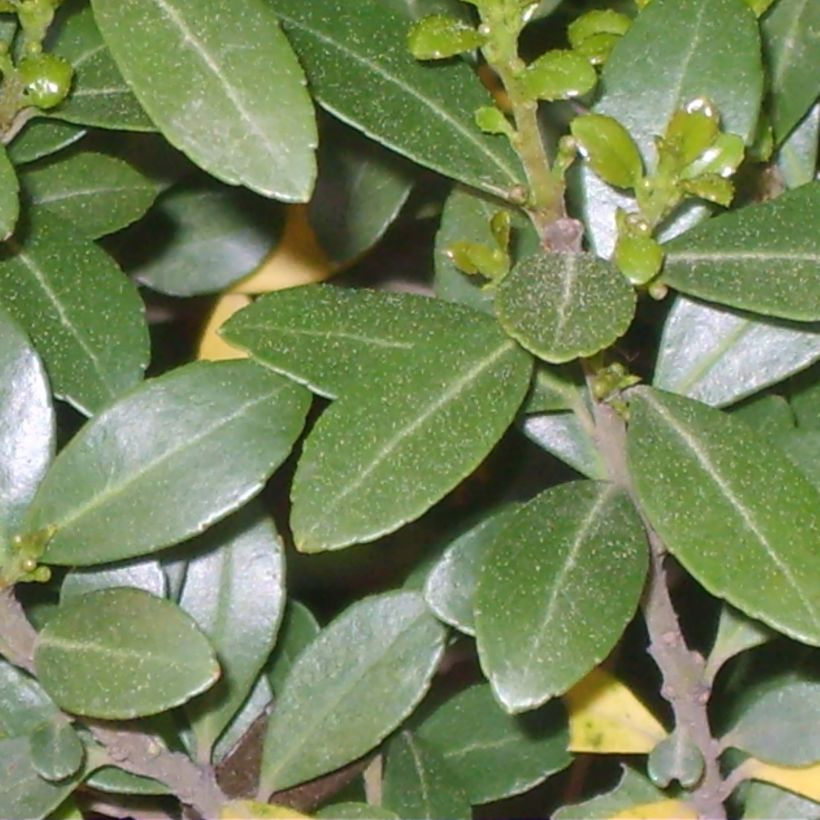

Plant habit
Flowering
Foliage
Botanical data
Ilex
crenata
Green Hedge
Aquifoliaceae
Japanese Holly, Box-leaved Holly, Box-leaved Ilex, Dwarf Holly
Cultivar or hybrid
Other Ilex - Holly
Planting and care
When planting Green Hedge holly, add compost and incorporate it into your garden soil to slightly acidify it while fertilizing it. If your soil is rich in active chalk, the holly will tend to develop chlorosis (the foliage gradually turns yellow around the leaf veins). Choose a semi-shaded or shaded location in a warm climate. Water (with non or low limestone water) for the first 3 years, especially in summer and in case of prolonged drought, to help the bush establish itself. It will then manage on its own, as it tolerates drought quite well, in semi-shade and in deep soil. If you want to give a specific shape to this holly, prune it twice a year: first in early summer, then in September-October. Ilex can be attacked by holly leaf miner or white scale insects in spring, and mites and aphids in summer. Consider a preventive treatment at the beginning of the season. Ilex crenata prefers climates with cold winters and mild summers.
Planting period
Intended location
Care
-
, onOrder confirmed
Reply from on Promesse de fleurs
Evergreen shrubs
Haven't found what you were looking for?
Hardiness is the lowest winter temperature a plant can endure without suffering serious damage or even dying. However, hardiness is affected by location (a sheltered area, such as a patio), protection (winter cover) and soil type (hardiness is improved by well-drained soil).

Photo Sharing Terms & Conditions
In order to encourage gardeners to interact and share their experiences, Promesse de fleurs offers various media enabling content to be uploaded onto its Site - in particular via the ‘Photo sharing’ module.
The User agrees to refrain from:
- Posting any content that is illegal, prejudicial, insulting, racist, inciteful to hatred, revisionist, contrary to public decency, that infringes on privacy or on the privacy rights of third parties, in particular the publicity rights of persons and goods, intellectual property rights, or the right to privacy.
- Submitting content on behalf of a third party;
- Impersonate the identity of a third party and/or publish any personal information about a third party;
In general, the User undertakes to refrain from any unethical behaviour.
All Content (in particular text, comments, files, images, photos, videos, creative works, etc.), which may be subject to property or intellectual property rights, image or other private rights, shall remain the property of the User, subject to the limited rights granted by the terms of the licence granted by Promesse de fleurs as stated below. Users are at liberty to publish or not to publish such Content on the Site, notably via the ‘Photo Sharing’ facility, and accept that this Content shall be made public and freely accessible, notably on the Internet.
Users further acknowledge, undertake to have ,and guarantee that they hold all necessary rights and permissions to publish such material on the Site, in particular with regard to the legislation in force pertaining to any privacy, property, intellectual property, image, or contractual rights, or rights of any other nature. By publishing such Content on the Site, Users acknowledge accepting full liability as publishers of the Content within the meaning of the law, and grant Promesse de fleurs, free of charge, an inclusive, worldwide licence for the said Content for the entire duration of its publication, including all reproduction, representation, up/downloading, displaying, performing, transmission, and storage rights.
Users also grant permission for their name to be linked to the Content and accept that this link may not always be made available.
By engaging in posting material, Users consent to their Content becoming automatically accessible on the Internet, in particular on other sites and/or blogs and/or web pages of the Promesse de fleurs site, including in particular social pages and the Promesse de fleurs catalogue.
Users may secure the removal of entrusted content free of charge by issuing a simple request via our contact form.
The flowering period indicated on our website applies to countries and regions located in USDA zone 8 (France, the United Kingdom, Ireland, the Netherlands, etc.)
It will vary according to where you live:
- In zones 9 to 10 (Italy, Spain, Greece, etc.), flowering will occur about 2 to 4 weeks earlier.
- In zones 6 to 7 (Germany, Poland, Slovenia, and lower mountainous regions), flowering will be delayed by 2 to 3 weeks.
- In zone 5 (Central Europe, Scandinavia), blooming will be delayed by 3 to 5 weeks.
In temperate climates, pruning of spring-flowering shrubs (forsythia, spireas, etc.) should be done just after flowering.
Pruning of summer-flowering shrubs (Indian Lilac, Perovskia, etc.) can be done in winter or spring.
In cold regions as well as with frost-sensitive plants, avoid pruning too early when severe frosts may still occur.
The planting period indicated on our website applies to countries and regions located in USDA zone 8 (France, United Kingdom, Ireland, Netherlands).
It will vary according to where you live:
- In Mediterranean zones (Marseille, Madrid, Milan, etc.), autumn and winter are the best planting periods.
- In continental zones (Strasbourg, Munich, Vienna, etc.), delay planting by 2 to 3 weeks in spring and bring it forward by 2 to 4 weeks in autumn.
- In mountainous regions (the Alps, Pyrenees, Carpathians, etc.), it is best to plant in late spring (May-June) or late summer (August-September).
The harvesting period indicated on our website applies to countries and regions in USDA zone 8 (France, England, Ireland, the Netherlands).
In colder areas (Scandinavia, Poland, Austria...) fruit and vegetable harvests are likely to be delayed by 3-4 weeks.
In warmer areas (Italy, Spain, Greece, etc.), harvesting will probably take place earlier, depending on weather conditions.
The sowing periods indicated on our website apply to countries and regions within USDA Zone 8 (France, UK, Ireland, Netherlands).
In colder areas (Scandinavia, Poland, Austria...), delay any outdoor sowing by 3-4 weeks, or sow under glass.
In warmer climes (Italy, Spain, Greece, etc.), bring outdoor sowing forward by a few weeks.

































